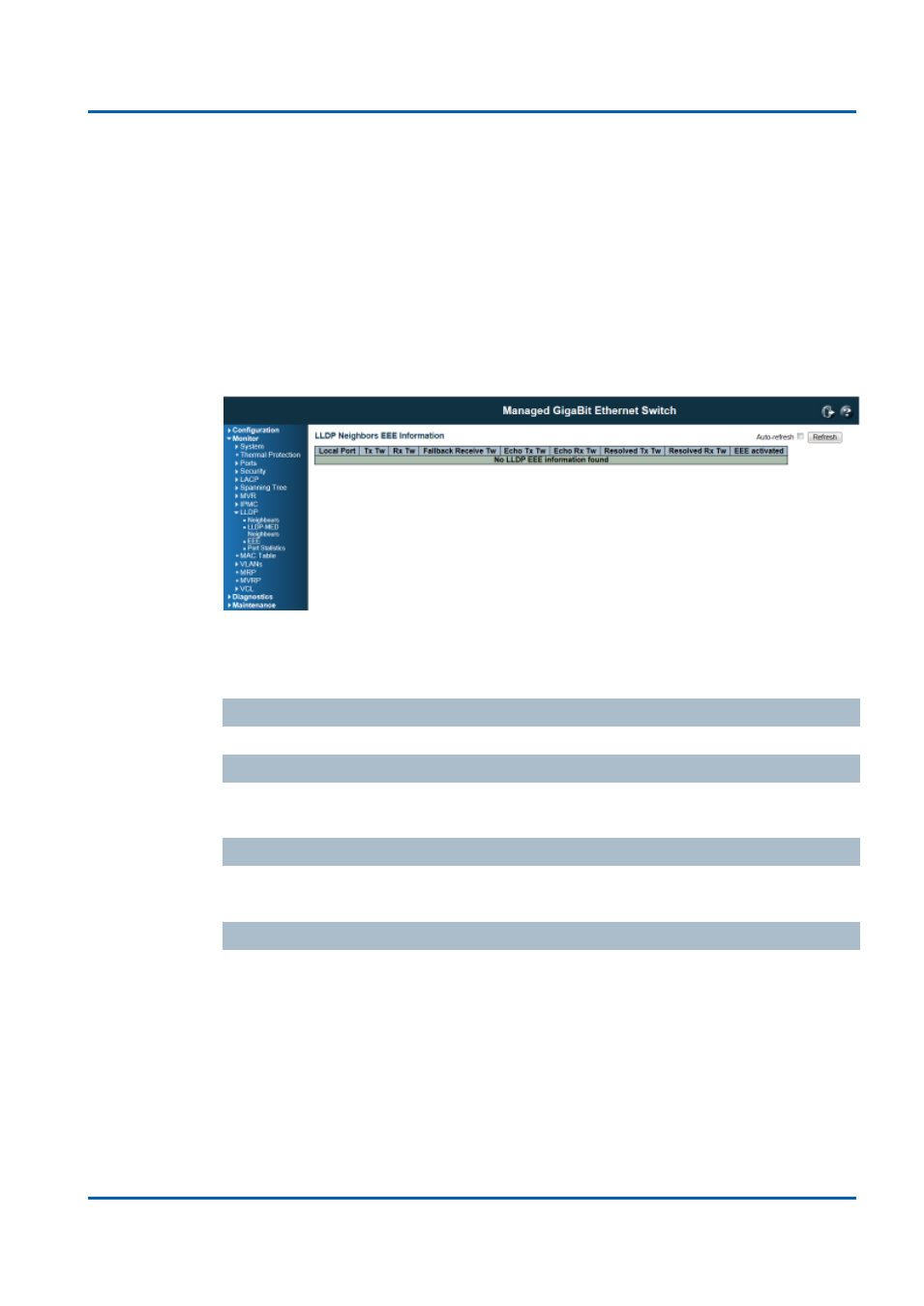Lldp eee – Niveo Professional NGSME16T2H User Manual
Page 343

Chapter 5: Monitor, Diagnostic, Maintenance
Monitor, Diagnostic, Maintenance
NGSME16T2H User Manual | 343
LLDP EEE
By using EEE power savings can be achieved at the expense of traffic latency. This
latency occurs due to that the circuits EEE turn off to save power, need time to boot
up before sending traffic over the link. This time is called "wakeup time". To achieve
minimal latency, devices can use LLDP to exchange information about their
respective tx and rx "wakeup time ", as a way to agree upon the minimum wakeup
time they need.
This page provides an overview of EEE information exchanged by LLDP.
LLDP Neighbors EEE Information
The displayed table contains a row for each port. The columns hold the following
information:
Local Port
The port on which LLDP frames are received or transmitted.
Tx Tw
The link parther's maximum time that transmit path can holdoff sending data after
deassertion of LPI.
Rx Tw
The link parther's time that receiver would like the transmitter to holdoff to allow time
for the receiver to wake from sleep.
Fallback Receive Tw
The link parther's fallback receive Tw.
A receiving link partner may inform the transmitter of an alternate desired Tw_sys_tx.
Since a receiving link partner is likely to have discrete levels for savings, this
provides the transmitter with additional information that it may use for a more
efficient allocation. Systems that do not implement this option default the value to be
the same as that of the Receive Tw_sys_tx.